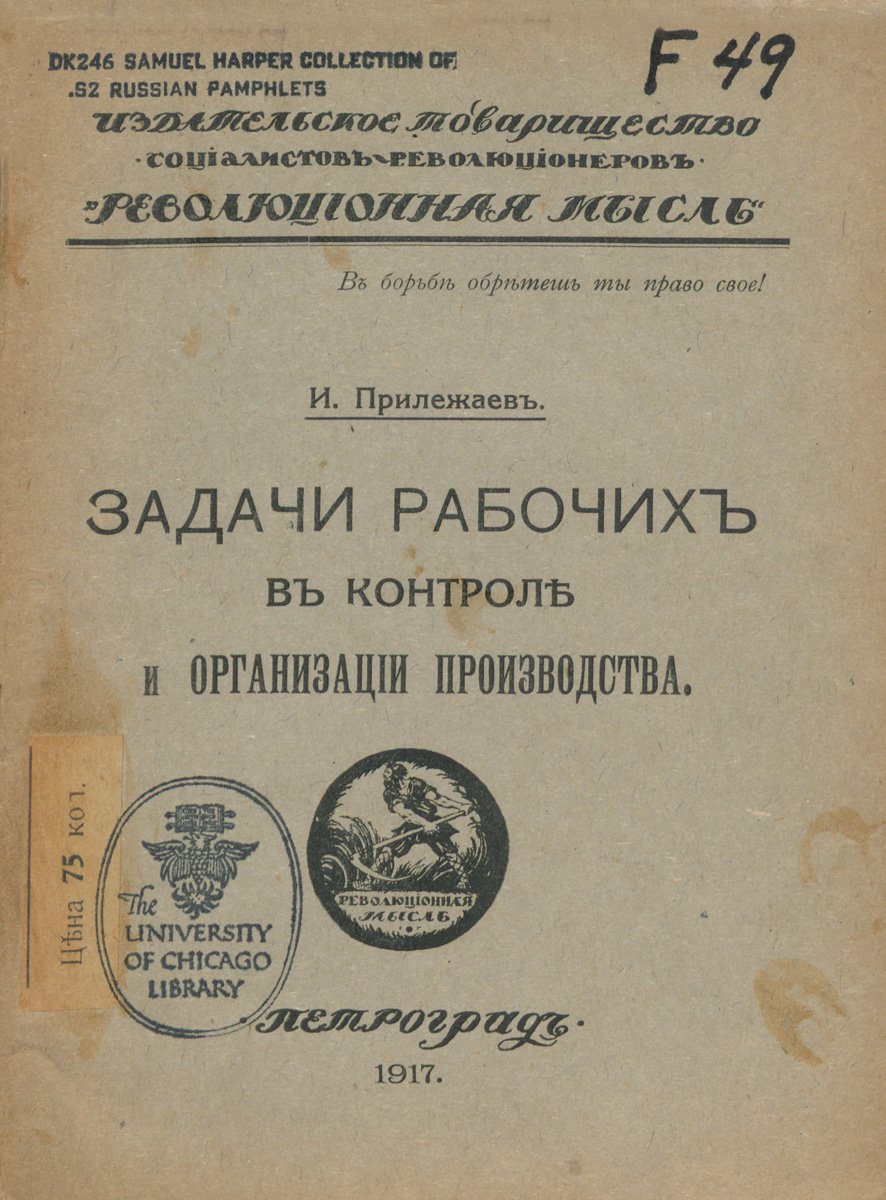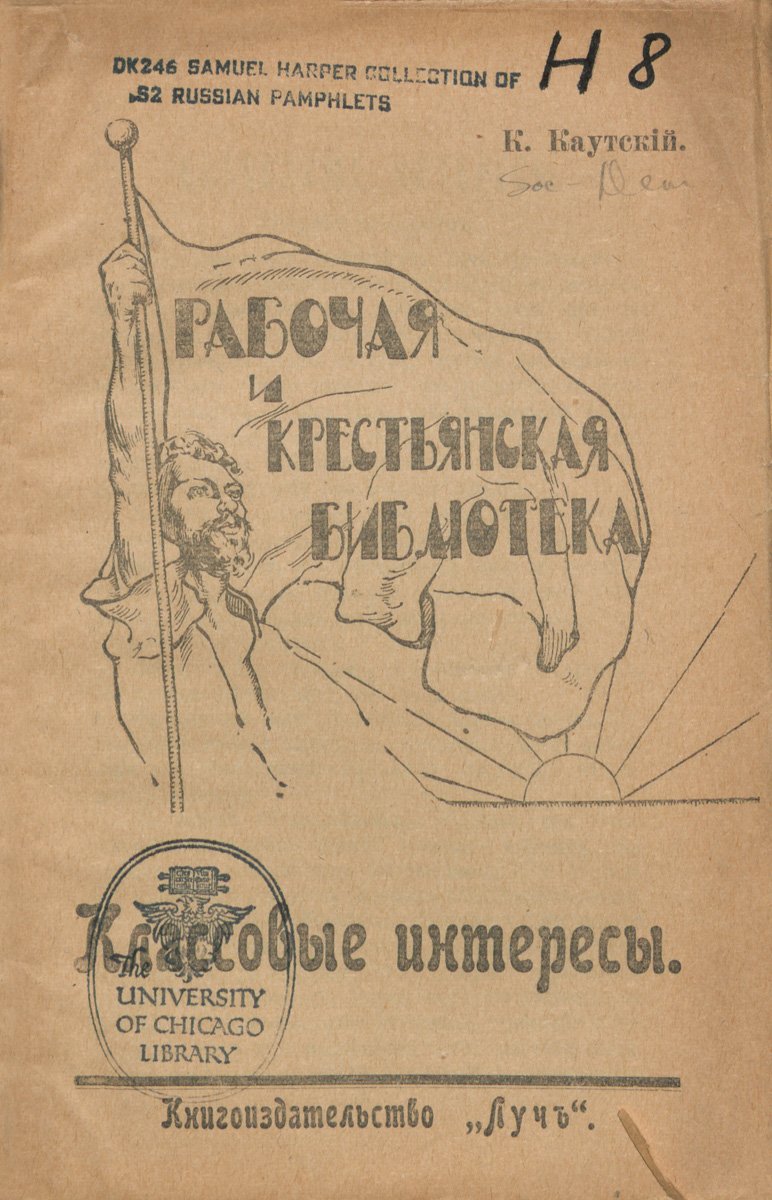The Pamphlet & Tactical Struggle
The most portentous of the political pamphlets of 1917 were Vladimir Ulyanov’s, published under his pseudonym “N. Lenin.” His first Letter on Tactics, which includes as an appendix his “April Theses,” suggests how to take advantage of the weak provisional government and introduces the pivotal slogan “All Power to the Soviets.” Such emphasis on realpolitik rather than abstract reflections was characteristic of the Bolsheviks, who were already exercising their authority through their dominance in the elected local councils, or soviets. Their pamphlets asked not “what is a republic?” but instead “what is to be done?” Aleksandra Kollontai calls for women to join the “war against war” and high prices, while Zlata Lilina points out the importance of organizing protest of the exploitation of women in labor. Prilezhaev’s tract on worker control of production bears the hallmarks of later Soviet publications, providing detailed analysis of class relations in labor. Emel’ian Iaroslavkii cites the mutual dependence of village and factory, and argues that capitalist exploitation can only be overcome through the union of workers and peasants. These strategies are leveraged with promises of a bright future following the defeat of capitalism, and follow the logic set forth in Karl Kautsky’s tract (despite his eventual break with Bolshevism), in which he argues that the narrow class interests behind the fight for workers’ rights are in fact the highest and most universal interests of humanity.


